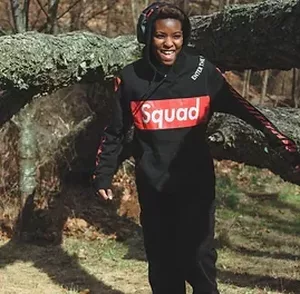Gender is often considered binary -- the idea that there are two distinct and opposite genders. But it's more useful and true to many people's experience that gender is a continuum with the hyper female stereotype on one end and hyper masculine stereotype on the other. Most kids likely fall somewhere along that continuum and not at either end if given the space to explore this part of their identities.
While many parents today are more open to viewing gender on a continuum, they still don't always understand it. Even if they do, they're often sending kids out into an aggressively gendered world to be policed and hurt by their peers.
Most kids don't want their gender to be a thing. They want it to be unremarkable and normalized and to just be whoever they are. In the land of gender policing that's hard for anyone, but it's especially hard for those who don't fit neatly into your typical male-female boxes. At school those boxes are not just enforced by their peers, but by gendered bathrooms and locker rooms, lunch tables and lineups. In the books they read Johnny is playing baseball and Jenny is watching him. Over and over again kids with more expansive genders get the message they are defective.
Below are a list of terms to familiarize you with the more expansive and creative world of gender. Many of these terms are relatively new to academia, medicine, and mainstream discourse. That means these are evolving terms and people can choose the term that most resonates with them. If you are going to refer to someone’s identity, you should always ask what label they prefer. There is also a list describing terms related to sexual orientation.
Before we get to gender and sexual orientation terms, here are a few you should know first:



Heteronormative. Heteronormativity is when binary gender identity and heterosexuality are considered the normal or preferred way of being. Everything is measured against behavior, clothing, relationships and identities of the straight, binary person. Heteronormativity is often linked to heterosexism and homophobia. If you’re not heteronormative, you’re often forced to explain yourself, while cisgender and heterosexual people don’t have to.
Gender Expression: This is how we express our gender identity to the world, through clothing, behavior, voice or hairstyle. It may or may not conform to stereotypically feminine or masculine behaviors or characteristics. We can't assume someone's gender identity based on their gender expression. If a cisgender boy wears a dress, it doesn't change his gender identity. It just means that he likes to wear clothing that society typically associates with girls.
Gender Identity: An internal, deeply felt sense of being female, male, a blend of both or neither. Identity refers to how individuals perceive themselves and what they call themselves. It can be the same as or different from their sex assigned at birth.
Gender Dysphoria: Falling outside of the gender binary does not mean someone has gender dysphoria. There must be clinically significant distress caused when a person's assigned birth gender is not the same as the one in which they identify. According to the American Psychiatric Association's Diagnostic and Statistical Manual of Mental Disorders (DSM), the term - which replaces Gender Identity Disorder - "is intended to better characterize the experiences of affected children, adolescents, and adults”


